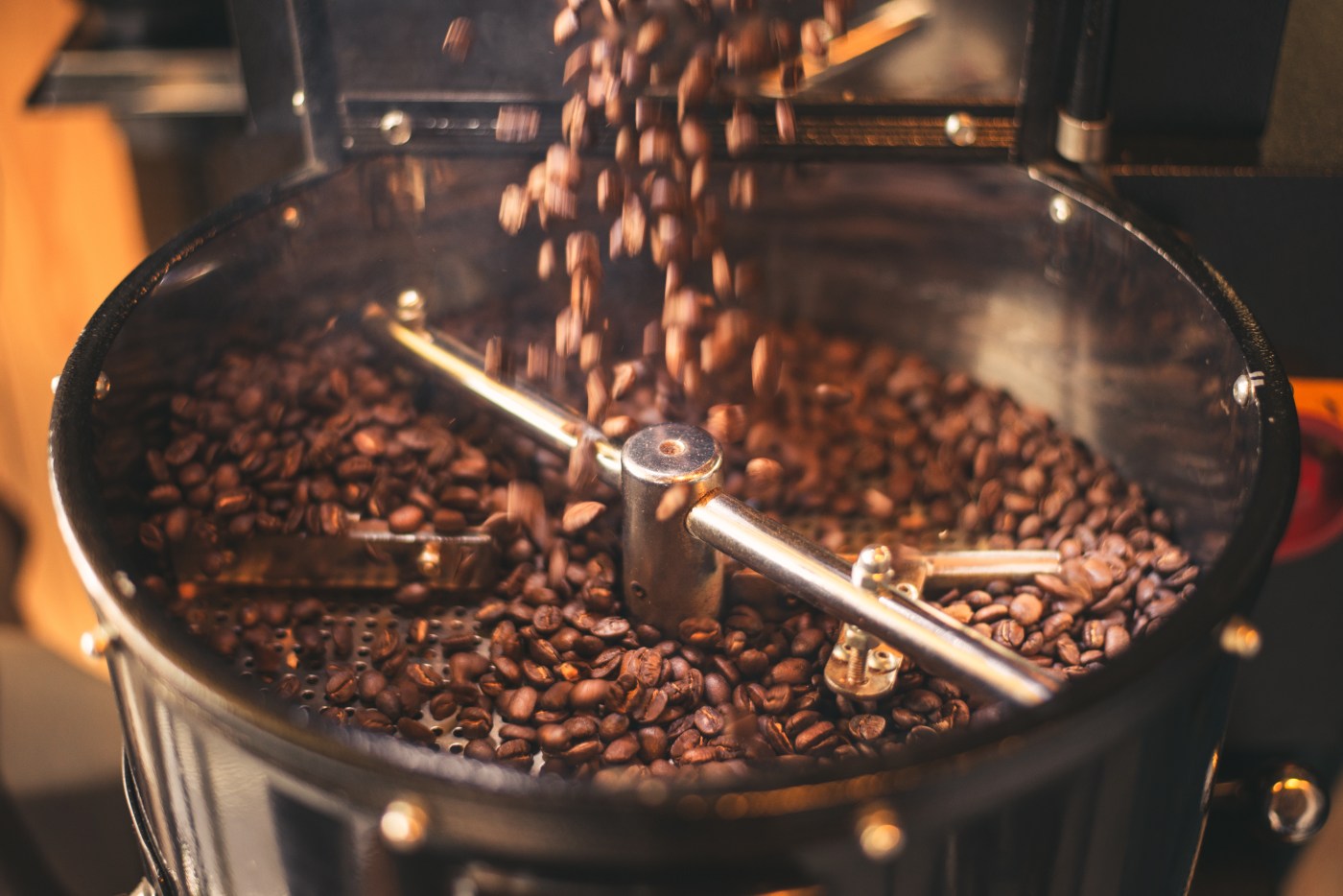Small batch coffee roasting — it is marketed as the best way to roast coffee and the only way to prepare specialty coffee — but what does small batch really mean and is it better than say a medium or large batch? The answer may force you to rethink everything you thought you knew about your favorite coffee.
What is small batch roasting?
So, what is small batch coffee? That is a great question! Small batch generally refers to coffee that is roasted in batches up to 50-pounds but it can also mean a small batch, say 150-pounds, roasted in a 250-pound capacity roaster. Both roasts are technically small batch but in this particular scenario, the 50-pound batch roasted in a 50-pound capacity roaster is likely to taste like oven-baked coffee while the 150-pound batch roasted in a 250-pound capacity roaster should taste just right. Why? well, that’s what most roasters don’t tell you: it isn’t just about the size of the batch, it is about a) the size of the batch roasted in relation to the roasting cylinder’s maximum capacity and b) the amount of human intervention or control required to perfect the roast.
Roasting is an art and a chemistry experiment wrapped into one. To achieve an optimal roast for a coffee, you need to control for, among other things, humidity, atmospheric pressure, barometric pressure, bean water content, and temperature. You must also ensure there is an even layer of beans in the roasting cylinder and that those beans are able to freely agitate, or move around briskly, within the bin. This bit is essential! If the cylinder is too full, the beans cannot agitate and produce an uneven roast where the beans on the bottom of the cylinder are generally scorched and the beans at the top are under-roasted — everything in between will taste baked. If the cylinder is not at least 50% full, you also run the risk of an inconsistent batch as the beans tend to bounce around the cylinder.
Regardless of the size of the batch being roasted, roasting at less than maximum capacity is a skill. A trained roaster needs to watch the beans at all times as smaller batches roast more quickly than larger batches. That said, there are some secondary benefits, apart from batch size, for purchasing coffee labeled small batch.
The upside
Most small batch roasters keep a low inventory and move their roasted coffee quickly. This means that your beans are likely fresh as they haven’t sat long in a warehouse either pre- or post-roast. Small batch roasts can also be more easily customized to a flavor profile.
The downside
Small batch roasting can be tricky! The beans are more likely to burn as the rate of rise (how quickly the bean temperature rises) increases as the beans-to-cylinder-capacity decreases, making it very easy to burn the beans. It is also much more challenging to provide a consistent coffee roast or blend with small batches as each roast requires fine-tuning the roaster based on the beans’ water content, the weather, and the amount of beans being roasted.
The bottom line
Small batch roasting has at least two meanings. If we define small batch as a batch under 50-pounds, approach with caution. Knowing someone roasts 50-pounds at a time really doesn’t tell you much — they could have a maximum 50-pound capacity roaster. You don’t know how well those beans were able to agitate or how long they sat on the warehouse floor before being roasted. If we define small batch as roasting in a cylinder that is filled to a maximum of 70% capacity in a roaster that is being calibrated for each roast, we encourage you to approach with optimism and high expectations. As for the amount of coffee being roasted per roast, we recommend you ignore that. As long as the roaster is roasting at a max 70% cylinder capacity and manned by a master roaster, you should consider it a small batch.
